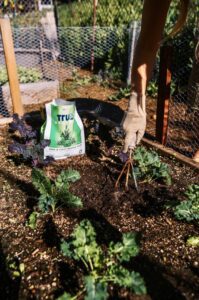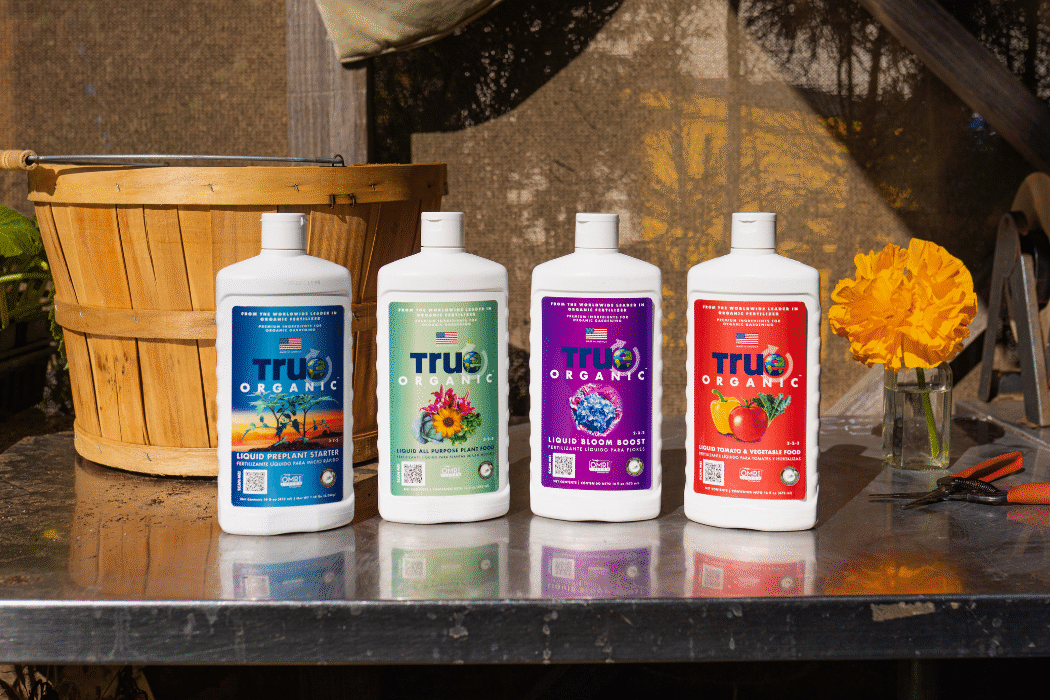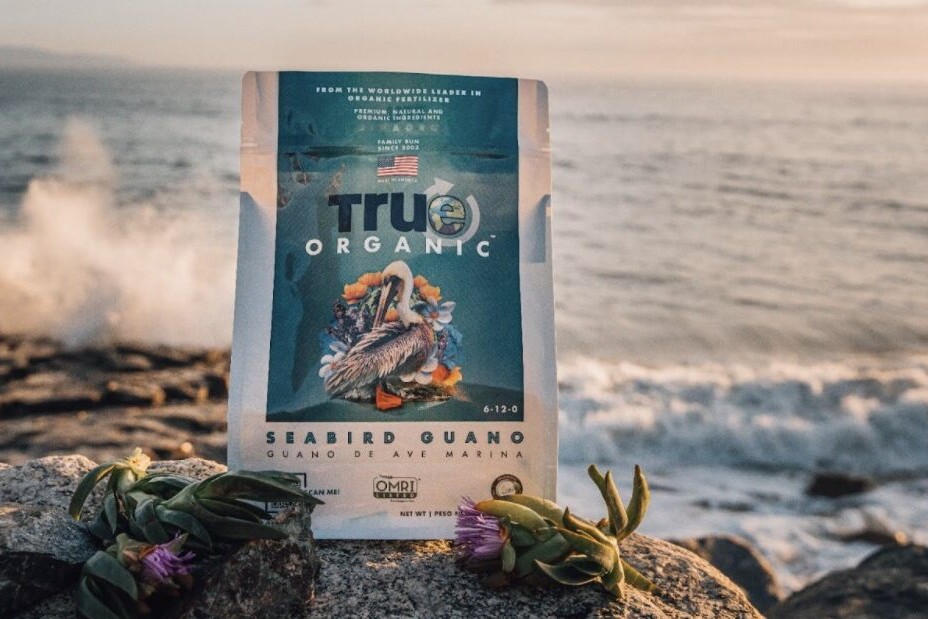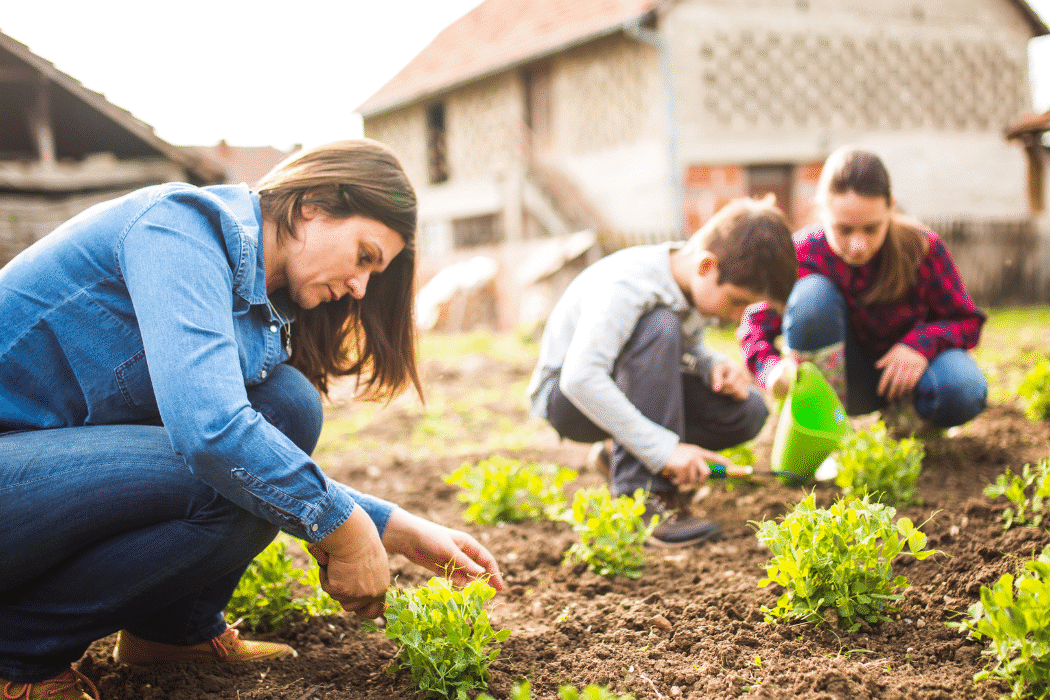June 25, 2023
June 23rd is National Soil Health Day
Why Soil Health Matters and How Your Garden Can Help
Just like water and air, soil is one of the essential ingredients that supports all the lifeforms on the planet.
There’s no better time to brush up on your soil health knowledge because June 23 is National Soil Health Day!
National Soil Health Day was established in 2019 to celebrate the people, farms, and practices that contribute to feeding, replenishing, and enhancing our global soil health.
Created by Acres U.S.A., North America’s longest-standing publisher for all things organic ag and sustainable farming, National Soil Health Day is an initiative with a mission we can whole-heartedly get behind at TRUE.
The mission: Recognizing soil as an essential natural resource, and soils professionals as playing a critical role in managing our Nation’s soil resources. Like-minded farms and farmers, organizations, individuals, and corporations (like us!), are working to bring the National Soil Health Day Resolution to the local level and encourage action to protect our soil.
To us at TRUE, that means education, community involvement, and providing home gardeners (like you!) with everyday ways to support our soil.
You can read and sign the National Soil Health Day pledge here.
Why does soil health matter?
What’s the first thing that comes to mind when you consider the words “soil health”? Probably daydreams of squirming earthworms, rows of vegetables ready for harvest, and bright green leaves.
It’s true, of course, that growing lush gardens and farms is the role we most associate with soil.
When soil is healthy, plants prosper. When plants are healthy, humans and all other living creatures prosper.
If soil isn’t healthy (with a robust microbiome, good at retaining water, etc.), plants can’t grow as abundantly nor hardily, and they end up less nutrient-dense at harvest—meaning the food on your table isn’t as supportive of your health.
Economic Impact
Think about how big the agricultural industry is—not simply in how much it provides for our families and wellbeing, but its economic weight as well.
According to USDA research, on-farm employment accounted for about 2.6 million jobs in 2019, and America’s farms contributed $136.1 billion to the United States economy that year.
Agriculture is truly at the heart of our nation’s prosperity. That means our soil is, too. When soil is truly healthy, it can support vibrant crops, happily grazing livestock, clean water, and diverse wildlife.
 What is regenerative farming?
What is regenerative farming?
Regenerative farming looks at the big picture. The goal of regenerative farming isn’t only to grow food, but also to rebuild the health of the soil. In that way, regenerative agriculture isn’t just about maintaining, but improving, rebuilding, restoring.
Healthy soil means healthy crops, healthy people, and a healthy planet. Regenerative growing practices focus on the soil first, as the foundation. They also look at farming methods that can help protect and restore the environment overall.
Sequestering Carbon
Did you know that soil actually holds twice as much carbon as the atmosphere?
Greenhouse gases like carbon dioxide, methane, ozone, and nitrous oxide have been released into the atmosphere over time, and an imbalance of these gases is harmful to our planet and dangerous for us humans. It’s particularly that CO2 that we most urgently need to take care of.
Taking carbon out of the air is one of the big goals of regenerative agriculture.
Farming and gardening have massively powerful potential to remove excess carbon from the atmosphere and put it back in the ground. That’s called carbon sequestration and it’s happening all around us.
You probably remember from school science classes that plants “breathe in” carbon dioxide. Beneath our feet and outside our windows, plants and soil microorganisms are taking in carbon-based “food” and using it to grow and thrive. Those amazing microorganisms “trap” carbon into the soil for years to come.
Enriching Soil
Regenerative agriculture also focuses on giving the soil what it needs to thrive. And carbon is one of those things it needs! Carbon-rich soil supports the network of microorganisms that help plants grow.
The bacteria and fungi in soil need carbon and other macronutrients to survive, and plants live in a symbiotic (mutually beneficial) relationship with those microorganisms.
Nature works in incredible ways, doesn’t it?
Regenerative Gardening At Home
Sequestering carbon and enriching soil are two key aspects of regenerative farming. Why not make them goals in your home garden? We promise it’s simpler than you might think.
Feed Your Garden, Feed Your Soil
One of the easiest ways to get started with soil-regenerating in your home garden is to use organic plant fertilizers and supplements that promote crop health and soil health.
Fertilizers made with organic ingredients from nature, like all of our True Organic products, give a major boost to soil. The nutrients and “food” soil microorganisms need are readily available and help soil rebuild its microbiome, structure, ability to retain water, and a ton of other power-ups.
Using organic fertilizers with ingredients like seabird guano, poultry manure, soybean meal, and other plant-based nutrients give soil the nutrients it needs to replenish itself.
“Our commitment at True is going beyond soil health and rather maintaining soil fitness. Our constant effort is to deliver carbon-rich, nutrient-balanced, and pathogen-free organic fertilizers to feed the soil as a whole ecosystem, rather than the plant itself. Application of True fertilizers, especially when combined with other beneficial management practices, brings life back to the land,” says Ehsan Toosi, PhD, True Organic’s Director of Research & Development.
Plant For The Soil
Regenerative farmer Acadia Tucker lends some advice on what to plant in your garden for maximum soil support. She suggests hardy perennials and easy-care plants that last a long time, like thyme, lavender, blueberries, walking onions, and garlic.
Rotating your crops is another way to be a friend to your soil. Planting diverse types of plants helps foster a robust soil microbiome.
Grow native plants, which are already adapted to work in perfect harmony with your local soil!
Add a tree. Whether to your yard or garden, trees not only stick around for a long time, capturing carbon for years and years, they support lots of other native creatures that can.
Try a cover crop. Plant something easy and green like alfalfa or clover between your main growing seasons so you’re sequestering carbon even when you’re not focused on the garden.
Really, any effort you make to learn about protecting and regenerating your soil is a worthy one!
Ready to make a difference in your own backyard? Start to think of soil as part of your garden, just like your snap peas, dahlias, or basil. It needs attention, nurturing, and support!
You’ll reap the rewards at every harvest and the planet will thank you.
Read More Articles by True Organic
Get To Know: True Organic Seabird Guano
June 23, 2021
Living Our True Organic Sustainable Values
September 27, 2023
Show us your True Organic Plants
#GrowWithTrue
www.trueorganic.earth

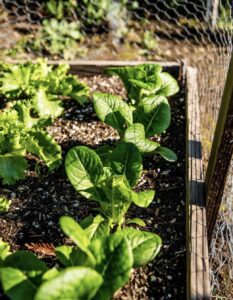
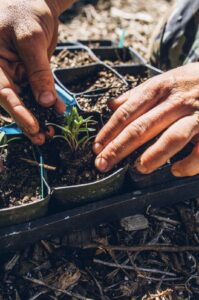 What is regenerative farming?
What is regenerative farming?